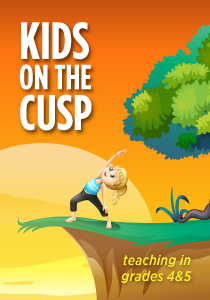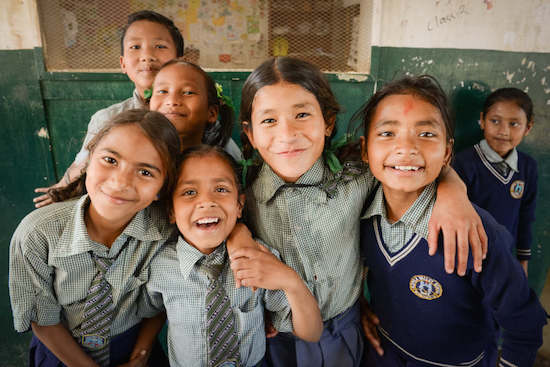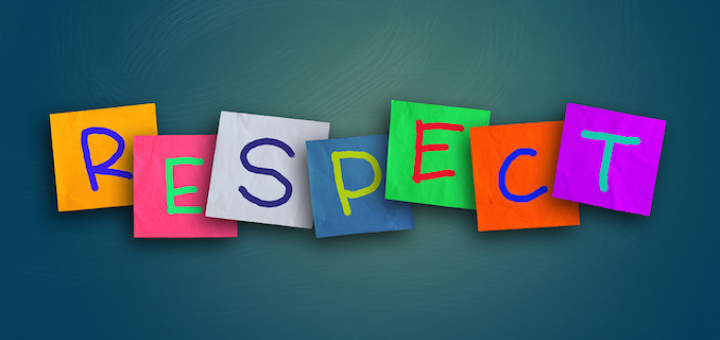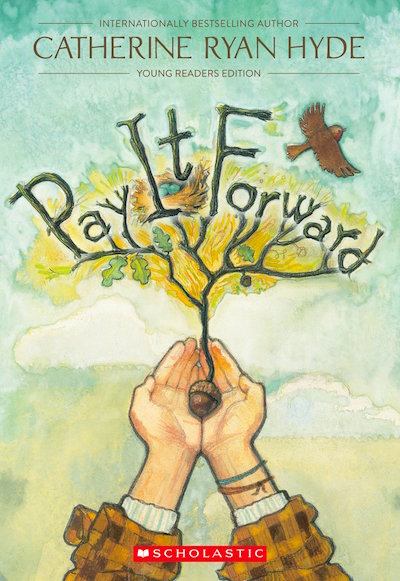To Learn about Respect, 4T Kids Pay It Forward
A MiddleWeb Blog

This was one of the questions posed to my seventeen-year-old son on one of the many college scholarship applications he has been working on in recent weeks.
When he came to me for advice about this enormous question, I suggested he sit down with the topic (and a blank piece of computer paper) and jot down whatever current world problems came to mind.
He didn’t resist. He knows I was a teacher long before I became his mother. He knows exactly what he’s dealing with. At times, it drives him crazy. Thankfully, this was not one of those times. He nodded thoughtfully and returned to his room to give it a try.
A little while later, he came out, a list of current world problems in hand. Among those listed were school violence, climate change and global warming, government shut-downs, war, and mental health (or lack thereof).
“I don’t know what the biggest problem facing the world today is, Mom,” he sighed. “They’re all pretty big problems. How am I supposed to choose which is the biggest?”
“I don’t know, Buddy,” I admitted. “You’re right, though. There are a lot of big things that need attention.”
“So how do I choose?” came the reply.
Teacher-mom clicked back on. “Go back and take a look to see if there are any connections between all of them. See if you can find a way to discuss how they relate to each other somehow.”
He disappeared again, and I got back to cooking, the topic forgotten.
During dinner, he gave me the update. “I shared the document with you, Mom. Can you edit for periods and stuff? You know my punctuation is…um…questionable.”
“Sure, honey.”
The following morning, I settled in with coffee to put on my mom-editing hat. What I read on the screen made me both proud and, at the very same moment, profoundly sad.
My son had identified lack of respect as the biggest problem facing our world today.
He wrote:
“I believe that the biggest problem in today’s society is lack of respect in all regards. Whether it is entitlement, disagreement, or just outright rudeness, there is too much of it in the world today. This lack of respect affects all areas of our lives. It slows government progress, preventing us from focusing on real issues, like wars or climate change. Without respect, any progress that can be made will be slower than is necessary.”
His truth stuck like a lump in my throat. I couldn’t disagree with him.
We have one rule in Room 4-T… “Respect”
I first heard this concept from my friend, Laura. She used it as a way to cover any possible circumstance or breach of trust that could occur over the course of any school day. Laura knows the value of respect. She wanted her students to value it as well.
My learners are young and impressionable. Teaching them true respect, for themselves and for others, just might get us on the path to improving some of the “bigger” problems we see all around us.
Getting the kids involved in the future is a noble goal. Respect, at its core, is about being kind to others and knowing deep-down that we are all valuable members of the global classroom that is our world.
Kindness and respect are the taproot of true diplomacy and the catalyst for true change. Paying it forward is one way we can nourish a cycle of caring and move toward healing. This is in no way a new idea. The movement was sparked by the novel Pay It Forward, written by Catherine Ryan Hyde and released in 1999. I was familiar with the phrase, but not the book. Tyler, or Tae Bo as he’s known in 4-T, introduced me to the book.
A few weeks into school, he quietly placed a copy of the book on my desk. Then, once he’d unpacked, he came over to explain, “I think you’re gonna’ like this one. I read it with my mom. It’s got a great message.” He flashed me quick grin and went back to his desk to start his Eye-Opener.
It took a few weeks, but I eventually carved out some time to read it. The story is both hopeful and heart-breaking, a mirror of the triumphs and tragedies of everyday life.
I brought it back to school the following Monday. As Tae Bo and I discussed the story and the characters, and shared our reactions to them, the other kids eavesdropped in the way that only a roomful of totally conspicuous students can.
Interest was sparked. Juliette wanted to know if she could read it next. So did Logan….and Emily. Tae Bo’s small act jumpstarted a movement in 4-T, a movement whose goal was for each of us to read the story and to pass-it-forward to the next reader in line.
A plan of action began to formulate. I realized that my son’s voice, and the voices of my students, could raise the level of respect in the world. We could do our part to begin another era of paying it forward, helping it forward, supporting each other forward… paying mutual respect and kindness forward.
Nurturing respect by learning to pay it forward
Teddy Roosevelt once commented, “Complaining about a problem without posing a solution is called whining.”
We can either discuss our world and its challenges on the reading rug, or we can take action and do something about it. Discussion and reflection become stagnant and cliché without action.
Here’s how the plan is coming along so far:
✓ Step One: Order 13 copies of Pay it Forward on-line with my Educator’s Discount (and some of the generous gift cards given to me by some 4-T families).
✓ Step Two: Give Tae Bo credit for paying Pay it Forward forward!
Up next…
Step Three: Share this inspirational video clip with the kids. It shows serial acts of kindness as people in a neighborhood “pay it forward.”
Step Four: Formulate a plan of action, designed by 4-T’s student voices, using these ideas:
✻ Introduce the kids to a variety of charities that exist in the world today. The selections each, in their own way, have something in common with many of the fictional characters we have already met this year on the 4-T reading rug (see links to them below).
✻ Brainstorm as a classroom community exactly how we will do our part to pay it forward. My hope is for the kids to identify three goals: one with a global or national mindset, focusing on one of the charities listed below; one with a community mind-set that is a bit closer to home, perhaps cleaning up litter or donating food; one being on a personal level, either at home or at school, where each of us helps another person somehow. However each of us chooses to do this, we should do our best to keep a “greater good” in mind.
Step Five: Carry out the plan. Pay it forward.
I’ll keep ya’ posted on how it unfolds.

BlinkNow seeks to change the world by empowering Nepal’s youth.
Here are some charities we will explore:
► We could help girls like Amal, who don’t have the power or the resources to speak for themselves. BlinkNow, recommended by a former 4T mom and member of my personal book-swap circle (thanks, Kerry!) offers a way.
► We could help kids like Ally, our Fish in her tree ~ here and here.
► We could speak for animals like Ivan, whose gorilla perspective gave us much to think about: Zoo Atlanta.
► We could honor Veterans like Vola after reading the story of Pax: like Pets for Vets.
Pay it Forward teaching resources:
Launch video: Give a Little Love (Noah and the Whale)
Launch video background: I used the ideas in this lesson plan to create the 4T student response sheets.
Pay It Forward hyperdoc: Curated at Padlet by Heather Marshall
Lesson Plans (PDF): Keep Kindness Going
Activities for Pay It Forward Week (PDF): Upper Elementary & Middle School




































Mary, these are such great ideas and terrific resources. With your permission Dedra Stafford and I would like to add some of them to our interactive website at http://www.teachingkidstothrive.com, which is free for teachers and helps us share tools and strategies with each other for teaching and reinforcing SEL skills at every grade level. Thanks in advance, and keep doing the terrific job you are doing with your 4th graders!
Thanks, Debbie! I can’t wait to see what the kids decide to pay forward! So you know, I found all of these resources online, so I don’t have any “permission” to actually give…I am absolutely going to check out your website, though! My hope is that Kids on the Cusp serves our learning community in much the same way :)
You ROCK, Mary Tarashuk! My co-author, Dedra Stafford, should be adding your resources soon! Thanks, again!